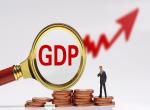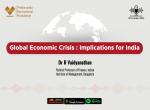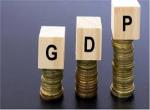The riches of the Ocean rival the wealthiest economies of the world. According to an estimate made by the World Wildlife Fund (WWF) the ocean assets can be valued at 24 trillion USD with an annual turnover in goods and services of around 2.5 trillion USD. However, the stark difference between a State and the Oceans is that the latter have weak universal governance and the former are strong exploitative customers. As a result the marine species have declined by 39 percent between 1970 and 2010, 50 percent of world corals have disappeared, high percent of sea grasses have been lost and deforestation rates of mangroves have exceeded loss of forest cover on land. These are indeed startling revelations that need immediate attention for a sustainable future.
Fortuitously nature is forgiving and has the ability to rejuvenate if utilised within reasonable means. Thus despite the degradations caused earlier, ‘Blue Economy’ has the potential to restore the lost ocean health, species and habitat. In this backdrop one is motivated to reflect upon Bay of Bengal (BoB) which is of immediate interest to the countries surrounding the Bay. In this regard, the moot questions that arise are: What are the major causes for degradation of the marine ecosystem in the BoB?; what initiatives have been taken by counties in the region for implementing Blue Economy?; and, what should be done for governance of the BoB region to restore the health, habitat and species for sustainable growth?
Causes for Degradation of BoB Marine Ecosystem
The BoB community comprising Sri Lanka, India, Bangladesh, Myanmar and Thailand has a combined population of 1.78 billion which is equivalent of 25 percent of the world population. The coastal population is estimated to be 450 million people and is equivalent of 50 percent of the world’s coastal poor. BoB is rich in natural resources including energy, minerals and fisheries which not only provides livelihood, but is also a valuable resource for foreign exchange. BoB is considered to be one of the Large Marine Ecosystems (LME) of the world that supports a wide range of habitats, including extensive tracts of mangroves (12 percent of the world’s mangroves), coral reefs (eight percent of the world’s coral reefs) and sea grass beds. It is an area of high biodiversity, with a large number of endangered and vulnerable species.
There are over 400,000 fishing boats operating in the BoB and over 4.5 million people are employed in fisheries and associated activities. Although most fishery production is consumed domestically, Thailand and India have emerged as high value fish exporting countries. Tourism too is a fast evolving industry with Thailand being major tourist destinations and receive considerable footfalls. Unsustainable commercial practices in tourism and fisheries have seriously impacted the ecosystem of the coastlines of BoB.
BoB is also rich in hydrocarbon with oil and gas finds in India, Bangladesh and Myanmar. Oil and gas exploration is a high risk industry from the perspective of pollution and environmental hazard. The shipping route passing South of Sri Lanka to the Malacca Strait is one of the busiest Sea Lanes of Communications (SLOC) with over 50000 vessels passing the Strait each year. There is also intensive shipping traffic along the coastline. Operational discharge from medium and small feeder ships are a major contributor to pollution as the installation of oil-water separators is not mandatory in these ships. Thus oil and gas industry and shipping have been a major factor in the escalation of pollution in the region.
Ship-breaking is another human intervention on the shores of BoB with Chittagong being one of the largest ship-breaking yards. It is an extremely hazardous industry for the contiguous seas. In addition, shipping collisions and groundings too have been responsible for accidental spilling of oil and unintended pollution. Effluent and industrial waste washed by the rivers into the sea is another major pollutant due to which concentration of metals such as Cu, Pb, Cd, Zn, Cr, Ni, Mg, and Ca have increased in the coastal waters. Thus, lack of governance has resulted in the indiscriminate use of the BoB, which needs to be rectified by robust implementation of Blue Economy through a regional framework.
Initiatives on Implementation of Blue Economy
The Indian Union Minister for Shipping, Road Transport & Highways and Water Resources, River Development & Ganga Rejuvenation, Shri Nitin Gadkari, had remarked in November 2017 that Blue Economy is proving to be a catalyst in India's progress and the performance of ports. Eight ports i.e. Kolkata, Paradip, Chennai, Cochin, New Mangalore, Mumbai, Jawahalal Nehru Port Trust (JNPT) and Kandla had registered positive growth in traffic during the period April to October in 2017. In addition, the Indian Government has implemented a Central Plan Scheme on ‘Blue Revolution: Integrated Development and Management of Fisheries’ and notified the ‘National Policy on Marine Fisheries, 2017’ (NPMF), which focus on ushering ‘Blue Revolution’ (Neel Kranti).
Bangladesh had organised the first ever international workshop on the Blue Economy in Dhaka in September 2014 and has accorded priority to fishery, maritime transportation, ship-recycling, ship building, and coastal tourism. The seriousness being attached by Bangladesh can be gauged from the nomination of a national coordinator for Blue Economy on January 30, 2017. Myanmar has a dedicated website on biodiversity titled ‘Sustainable Blue Economy’ which provides an insight into the scope of the State’s Blue Economy. Thailand views the Blue Economy as a means to advance conservation and sustainable management of oceans, fisheries and aquaculture.
Sri Lanka has commenced promoting a blue economy initiative under the ‘Sri Lanka NEXT’ programme since October 2016. The country aspires to become a maritime hub in the region, taking the advantage of central geographical position and the closeness to major sea lanes. Blue Economy is also being monitored at the Indian Ocean Rim Association (IORA) forum. The second ministerial conference of IORA held at Jakarta in May 2017 had stressed on scarcity of resources, waste management and long term economic prosperity with special emphasis on Goal 14.
Governance of Blue Economy in the BoB
It can be seen from the initiatives discussed above that States in the BoB have diverse perspective on Blue Economy. Whilst in India some departments are more focused on development, the onus of overseeing their sustainability rests on other departments. This could lead to coordination deficits despite the best intentions of the Government. Myanmar appears to be on the other extreme where the emphasis is largely on conservation of species and habitat and less on economic development. Despite BoB being a single water body, there appears to be lack of coherence and disparity in emphasis between littoral states of BoB. Even though forums such as IORA, UN Agenda 2030 and Economic and Social Commission for Asia Pacific (ESCAP) have tried to evolve policy directions, they have failed to forge coherence between the incongruent States. Such coherence is possible only at the regional and sub-regional level. In this backdrop there is requirement to build a regional structure that can provide customized regional solutions for regional problems. In this regard, the Bay of Bengal Initiative for Multi-Sectoral Technical and Economic Cooperation (BIMSTEC) could serve as a framework for implementation of Blue economy in the BoB.
BIMSTEC has 14 sectors of cooperation which include trade and investment, transport and communication, energy, tourism, technology, fisheries, agriculture, public health, poverty alleviation, counter-terrorism and transnational crime (CTTC), environment and natural disaster, people-to-people contact, culture and climate change. Each sector has a lead country steering the agenda. Of these, at least eight sectors are linked to Blue Economy - transport and communication, energy, tourism, technology, fisheries, CTTC, environment and natural disaster and climate change. However, these sectors are presently being steered from the perspective of technology and information sharing and lack a concrete framework for protection of the interests of the BoB Community. Thus there is a case for securitising the BIMSTEC to address transnational and non-traditional challenges. These issues would require unified regional vision, institutional and regulatory framework, governance instruments, technological collaboration and monitoring mechanism.
In March 2017 the National Security Advisors (NSAs) of BIMSTEC had met for the first time and had agreed to formulate a common security regime for the BoB. The second meeting of the NSAs was held in Dhaka on March 28, 2018. Therefore, there appears to be consensus on building a structure on maritime security for BoB. The question however, is that what should be the terms of reference for such a security framework? In this regard, Blue Economy is not an adage anymore, but an immediate problem for realizing sustainable development and economic growth of the region, that offers immense potential, and a rationale for evolving a regional security cooperation in the BoB under the aegis of BIMSTEC.
(Views expressed are of the author and do not necessarily reflect the views of the VIF)
Image Source: http://www.albd.org/articles/news/31715/HPM-Sheikh-Hasina-for-uprooting-terrorism-in-BIMSTEC-region











Post new comment